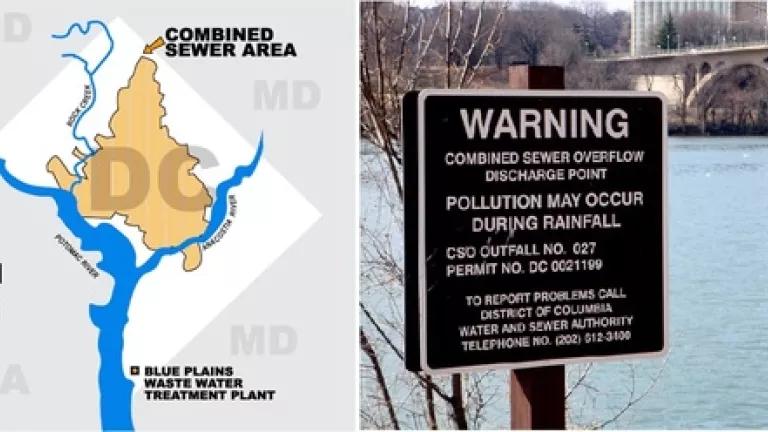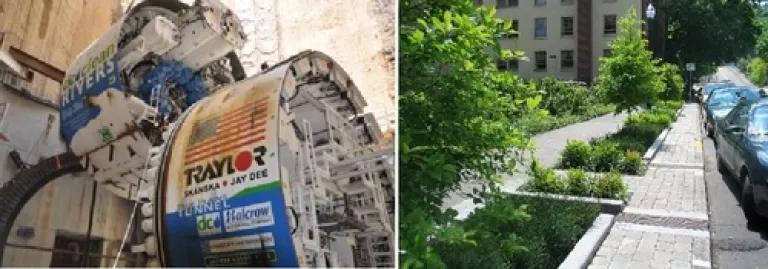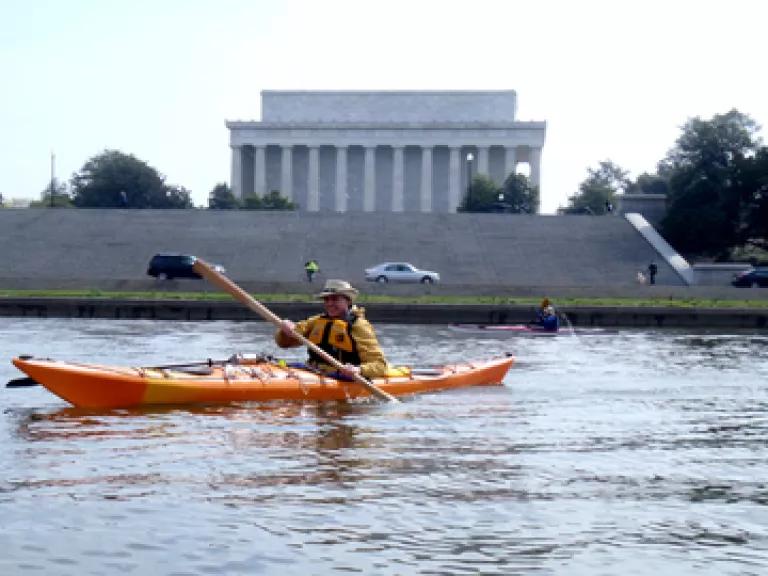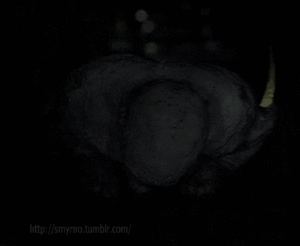We Made DC Water's Green Infrastructure Proposal Better - But There's Still Room for Improvement

Earlier this week, the U.S. Department of Justice concluded the public comment period on DC Water's most recent proposal to change course in its efforts to stop raw sewage from contaminating the waters of our nation's capital.
NRDC submitted comments to encourage DC Water to improve the proposal in a few ways. But before I describe the changes that we advocated in those comments, I want to pause and reflect on the fact that, thanks to the efforts of NRDC and our dedicated partners in the local environmental community, this proposal is much stronger than the initial proposal DC Water put forward last year.
As I described earlier this summer, DC Water is in the middle of a multi-decade effort to dramatically reduce what are known as "combined sewer overflows." In the oldest parts of Washington, DC - about a third of the city - sewer pipes collect both sewage and rainwater, and they overflow into the nearest river or stream when rainstorms overwhelm the system. These overflows occur many times each year and pose a serious threat to public health.
On the left, a map of the District's combined sewer area. On the right, a combined sewer overflow warning sign along the Potomac.
To solve this problem, DC Water has been ordered by a court to construct massive underground tunnels to capture the sewage-rainwater mixture before it overflows. Some of those tunnels are under construction, but DC Water wants to eliminate or downsize the rest by substituting aboveground green infrastructure practices, which capture rain where it falls and prevent it from entering the sewer pipes in the first place. NRDC has been a big fan of green infrastructure for many years, since it creates a wide range of environmental, economic, and social benefits that underground tunnels don't provide.

On the left, DC Water's "Lady Bird" tunnel boring machine. On the right, green infrastructure practices that capture rainfall.
DC Water originally proposed this "gray-to-green" switch last year. Despite our enthusiasm for the green approach, we couldn't support that proposal because it had serious flaws, as we explained in our comments on it. Most problematically, that original proposal would have committed DC Water only to spending a certain amount of money on green infrastructure practices, without being held accountable for actually achieving clean water results. We pushed back hard against that approach, together with our colleagues at Earthjustice, DC Environmental Network, and other partner organizations.
DC Water heard us. Their revised proposal now incorporates objective metrics of performance and would require DC Water to implement green infrastructure on a certain number of acres, pursuant to a specific schedule. This change makes the plan much more likely to succeed at stopping overflows and cleaning up our waters. And it wouldn't have happened without the persistent involvement of the District's environmental advocates.
As I mentioned above, though, certain aspects of the proposal should still be strengthened to improve accountability and effectiveness. Our recently submitted comments describe some of the needed changes. For example, DC Water needs to perform more advance planning to ensure that adequate space exists for all the green infrastructure practices that need to be installed. The plan must incorporate frequent checkpoints, backstops, and contingency plans in case the green infrastructure doesn't perform exactly as predicted. Stakeholders need to have more opportunities to provide input along the way.
We also continue to oppose the proposed five-year delay in stopping overflows, compared to the current schedule. Washingtonians have waited long enough to have rivers and streams that are safe enough for playing, swimming, and fishing.

We hope that DC Water, EPA, and DOJ heed our suggestions this time, too, so that the final plan is designed for success. We believe that the changes we've called for would also make it more likely that the court overseeing the process will approve the change in plans from gray to green - an approval that is necessary before the green infrastructure approach can proceed.
Before I wrap up this post, please bear with me on a slight digression, which I promise will make sense shortly. My favorite television show of all time is The X-Files. In anticipation of the batch of new episodes scheduled to be released early next year, I've been going back and re-watching the entire series. The other night, I sat down to watch the episode "The Host" from season two. This is a classic monster-of-the-week episode in which a mutant flukeman terrorizes the sewers of Newark, NJ.

The flukeman from "The Host."
Watching the episode, I had to laugh because when I originally saw it in 1994, I had no idea that I would grow up to have a job in which sewer systems play such a prominent role. A key plot point in the episode involves the fact that the flukeman got into the Newark sewers via a combined sewer outfall. Of course, now I know that in real life, what comes out of these sewer pipes is much scarier than what goes in. But thanks to DC Water's efforts to stop sewage overflows - and the environmental community's commitment to strengthening and improving those efforts - soon the residents of our nation's capital can all be a little less afraid of going into the water.

